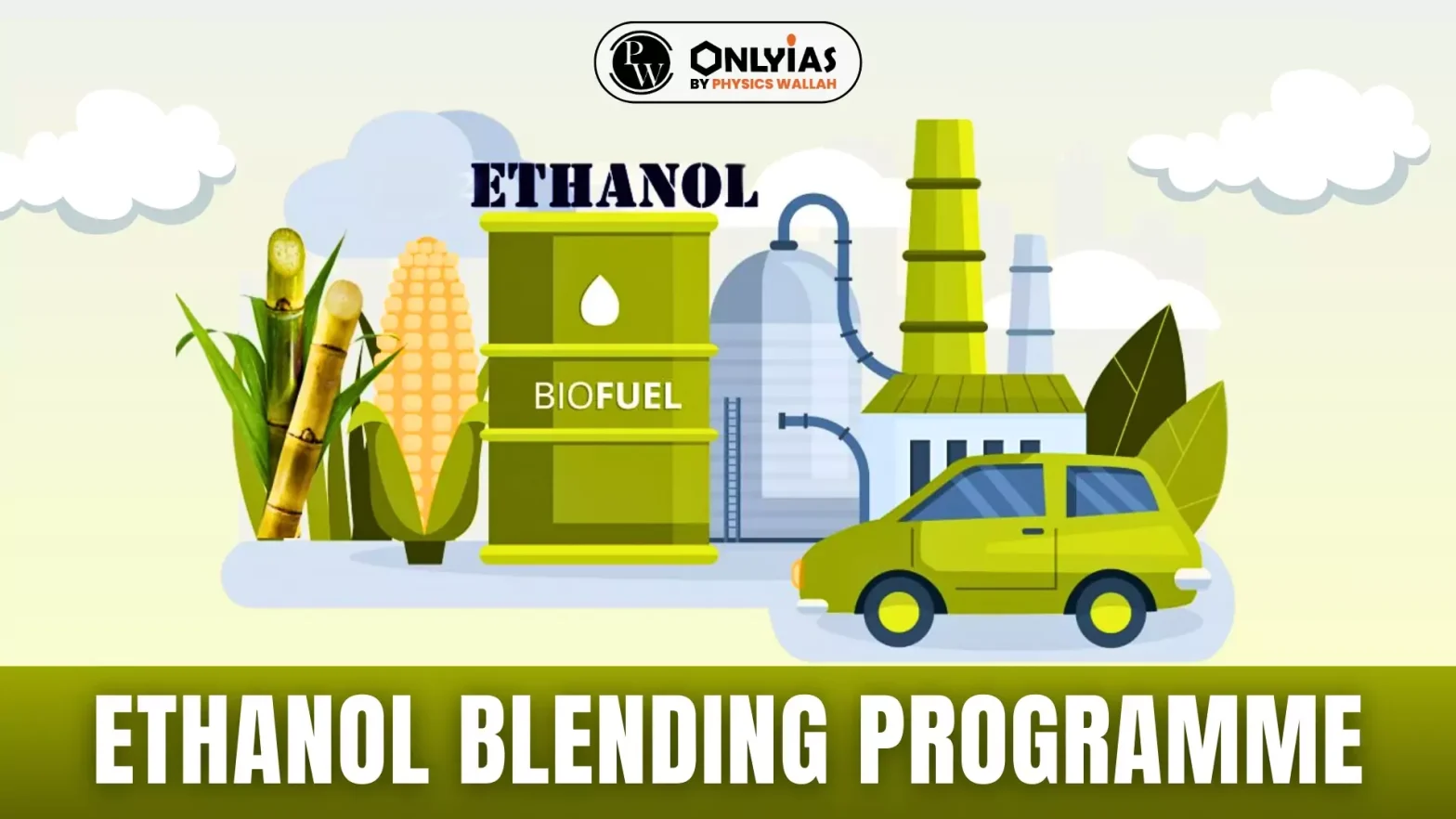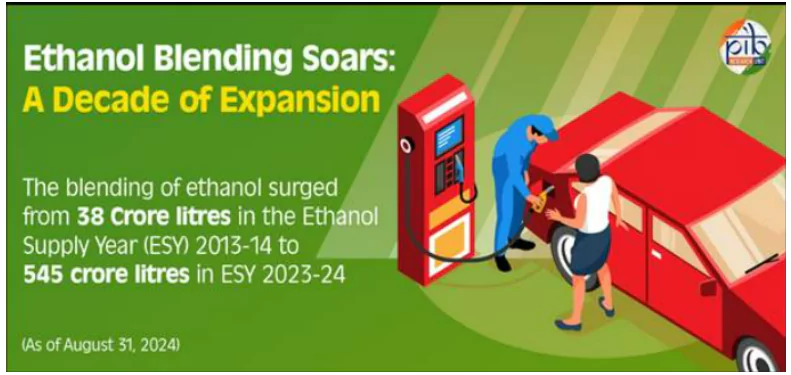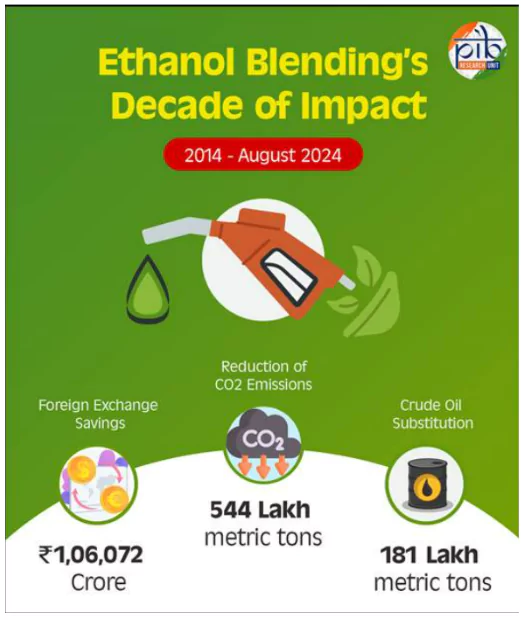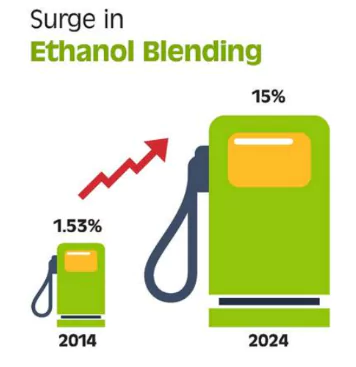Ethanol Blending Programme was introducted in Janaury 2003 to secure energy future by embracing sustainable practices. Learn more about EBP here.

Ethanol Blending Programme (EBP) is a significant step by the Government of India toward reducing dependence on fossil fuels and enhancing energy security. The Government of India is planning of achieving ethanol blending targets 20% by 2025.
By blending ethanol with petrol, this initiative aims to reduce carbon emissions, promote renewable energy sources, and support the agricultural sector. The programme aligns with the National Policy on Biofuels, which sets targets for increasing ethanol usage in the country’s fuel mix.
The Ethanol Blending Programme (EBP) was introduced to promote the use of ethanol as an alternative fuel by blending it with petrol. Ethanol is a biofuel derived from sugarcane, maize, and other biomass sources, making it a cleaner and more sustainable option than conventional fossil fuels.

Source – PIB
Ethanol Blended Petrol (EBP) is a mixture of ethanol and petrol, aimed at reducing the carbon footprint of fuel consumption. Initially, the government allowed up to 10% ethanol (E10) blending, but higher blends like E20 (20% ethanol in petrol) are now being implemented to reduce dependency on fossil fuels.
The government is taking strong steps to increase ethanol blending in petrol. Originally, the goal was to reach 20% ethanol blending by 2030, but now it has been moved up to 2025. This shows India’s commitment to using cleaner and more sustainable energy. The government has set ambitious targets to increase ethanol blending levels:
| Year | Ethanol Blending Target |
| 2022 | 10% (E10) – Achieved |
| 2025 | 20% (E20) – Target |
| 2030 | Higher Blending Levels Proposed |
By April 2023, India achieved 12% ethanol blending, progressing steadily towards the E20 target by 2025.
E20 petrol is a fuel blend consisting of 20% ethanol and 80% petrol. This blend is designed to:
E20 fuel is being introduced in a phased manner across India, with automobile manufacturers modifying engines to be compatible with higher ethanol blends.
The National Policy on Biofuels (2018, updated in 2022) provides a framework for promoting biofuels like ethanol and biodiesel in India. Key highlights of the policy include:
The Ethanol Blending Programme (EBP) has achieved significant milestones under the leadership of Prime Minister Narendra Modi, driving energy security, sustainability, and rural economic growth.

Credits- PIB

Credits – PIB
Despite its benefits, the Ethanol Blending Programme faces challenges such as:
Ready to boost your UPSC 2025 preparation? Join PW’s UPSC online courses today!
The Ethanol Blending Programme (EBP) is an initiative to blend ethanol with petrol to reduce carbon emissions, decrease dependence on crude oil imports, and promote biofuel usage in India.
Ethanol Blended Petrol (EBP) is a mixture of ethanol and petrol, with ethanol percentages ranging from 10% (E10) to 20% (E20) and beyond.
The Government of India aims to achieve 20% ethanol blending (E20) by 2025, advancing the target from the previous deadline of 2030.
E20 petrol is a blend of 20% ethanol and 80% petrol, developed to reduce emissions and enhance fuel efficiency.
The National Policy on Biofuels (2022 update) promotes biofuel production, expands ethanol feedstock sources, and sets blending targets to reduce fossil fuel dependency and boost renewable energy adoption.

<div class="new-fform">
</div>